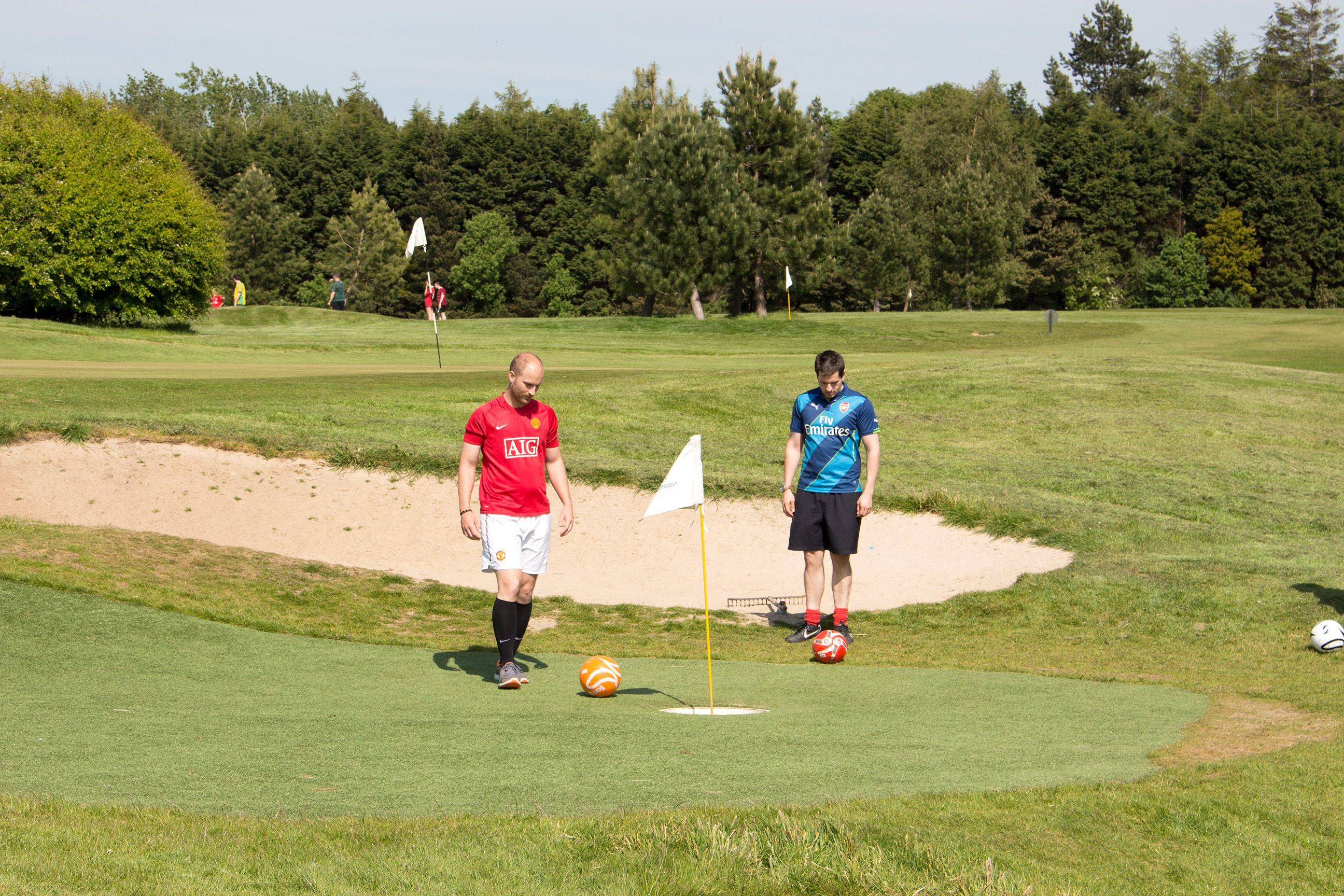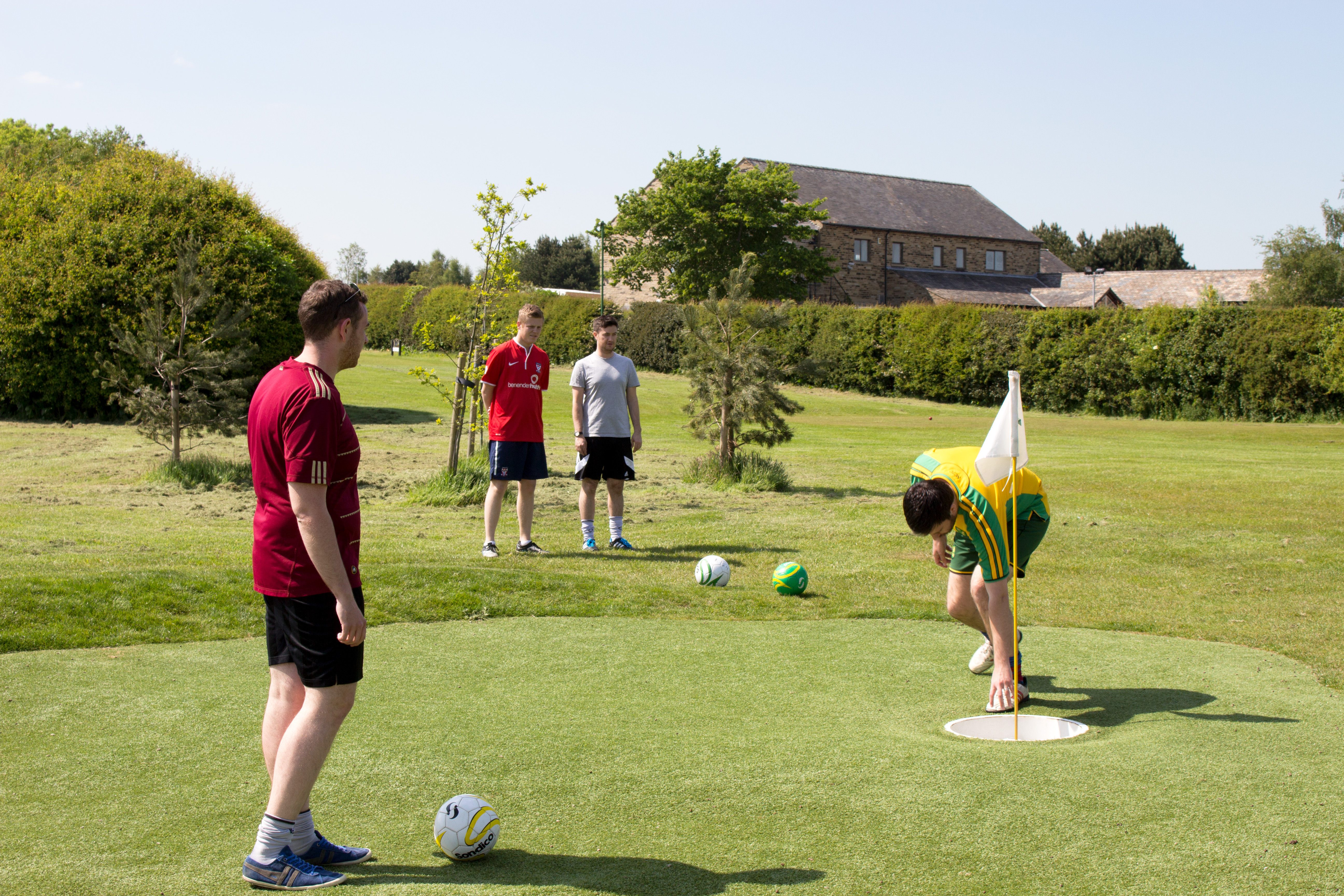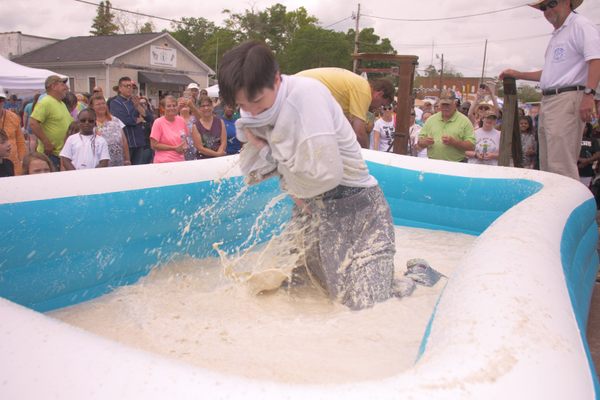Regular Golf Is Slowly Dying. Enter: FootGolf

The rules are simple: kick the ball in the hole. (Photo: National Club Golfer)
FootGolf, a fusion of soccer and golf, is often described with the tagline, “the best game ever invented.” Those are strong words for something that most people still haven’t heard of. Yet with participation in traditional golf on a widespread decline, FootGolf has been showing potential; the British FootGolf Association claims it is the country’s fastest-growing sport.
The second annual FootGolf World Cup took place this month in Buenos Aires, Argentina, with 230 players hailing from 26 countries. And while that World Cup was male-dominated, FootGolf seems to be bringing more diversity in race, age, and gender to golf courses than ever before.
Some struggling golf courses have eagerly embraced the new activity, as a means to boost revenue and bring in new customers. There are even courses now dedicated exclusively to FootGolf. Most importantly “fun” levels for the sport are extremely high, according to a survey by the National Golf Foundation, the same foundation which reported a loss of five million golfers over the last decade. Sixty-three percent of respondents rated the sport “extremely fun to play” (giving it a 10 out of 10), and over 90 percent gave it a rating of 8, 9, or 10. Almost all say they are likely to return and play again.

Competition gets intense as footgolfers plan their putts. (Photo: Las vegas footgolf/WikiCommons CC BY-SA 4.0)
FootGolf is not a revolutionary idea, following more or less the same rules and strategies as golf: get the ball into the holes, in this case, with as few kicks as possible. One source says it was conjured up in Holland in 2006, but harken back to 1929 and you’ll encounter an American named William Edward Code, the inventor of codeball, a sport virtually identical in its rules that didn’t quite catch on. Mr. Code would be pleased to see that over 80 years later, codeball, now FootGolf, is an official sport (as of 2012) overseen by the Federation for International FootGolf (FIFG).
A round of FootGolf takes half the time of a normal round of golf, and the only equipment required is a size 5 soccer ball. The simplicity of the sport has helped attract soccer players and golfers, adults and kids alike. A typical FootGolf uniform features knee-high argyle socks and shorts, with many athletes opting for newsboy caps. Cleats, however, are off limits.
According to Juan Fernandez, director of marketing for the American FootGolf League (AFGL), there are now 450 courses in 49 states. “The golf industry is embracing FootGolf right now; at the beginning they were just looking at us,” says Fernandez, who has worked at AFGL since 2012. “Now they see that FootGolf is here to stay.”

FootGolf holes are 21 inches in diameter, with the same ball-hole ration as in golf. (Photo: CK Golf Solutions/flickr)
But even he concedes there’s still a long way to go. FootGolf may be catching up, but it’s not succeeding everywhere. Rod Metzler, the CEO of Empire Golf, manages four golf courses in the Sacramento area, once described by the Sacramento Bee as “the FootGolf capital of America.” (There are currently seven courses there.)
Seeing FootGolf as an alternative source of revenue, Metzler’s team added FootGolf to one course, built a separate website, and hired someone for marketing and promotion. At its peak, they had 200 rounds of FootGolf a month, but regular golfers were peeved by the distraction, and ultimately, Metzler decided it wasn’t worth the effort.
Metzler, a long-time golf professional, recalls how existing golf courses just couldn’t keep up with demand when golf was booming in the ’80s and ’90s. That’s not happening yet with FootGolf, he says, even as traditional golf craters in popularity.
He chalks the decline of golf up to its difficulty level, time commitment, and to a lesser extent, its expense. “It’s a very difficult game, and we’re kind of in the instant gratification phase,” he says.
Enter FootGolf.
 In more recreational play, the knee-high argyle socks are not required. (Photo: National Club Golfer)
In more recreational play, the knee-high argyle socks are not required. (Photo: National Club Golfer)
At the Copper Hill Golf Course in East Granby, Connecticut, Friday and Saturday FootGolf nights were completely booked over the summer, says Paul Banks, owner and general manager. Next year, he plans to offer FootGolf every day of the week after 4 p.m.
At his course, FootGolf has so far proved popular with local soccer teams, staffers at office team-building events, and birthday party attendees. In all cases, there has been a good gender balance.
Notably, the course at Copper Hill is set up so that golfers and foot-golfers will not mix on the golf greens, thus avoiding the annoyances that scuttled Metzler’s FootGolf experiment.
Looking forward, Fernandez, of the American FootGolf League, compares FootGolf to rugby. Eventually, there will be sponsored professional leagues and competitions broadcast on TV. But right now, their first objective is to make sure that you have the opportunity to play FootGolf near where you live.
“You should try it,” he says, adding that everyone seems to come back from a round of FootGolf with a smile on their face.











Follow us on Twitter to get the latest on the world's hidden wonders.
Like us on Facebook to get the latest on the world's hidden wonders.
Follow us on Twitter Like us on Facebook